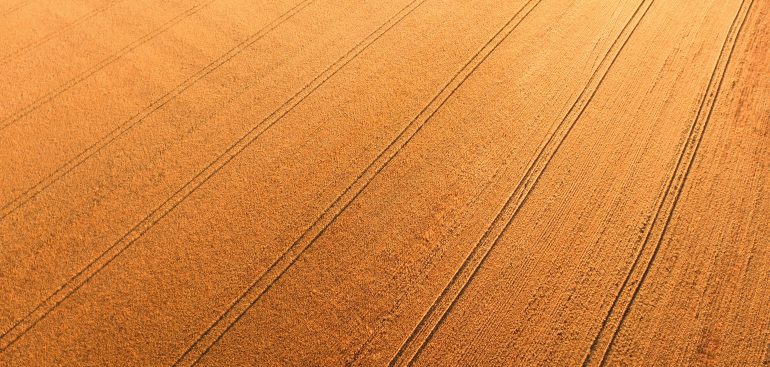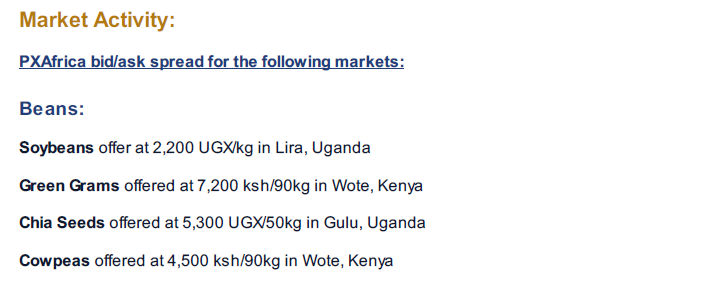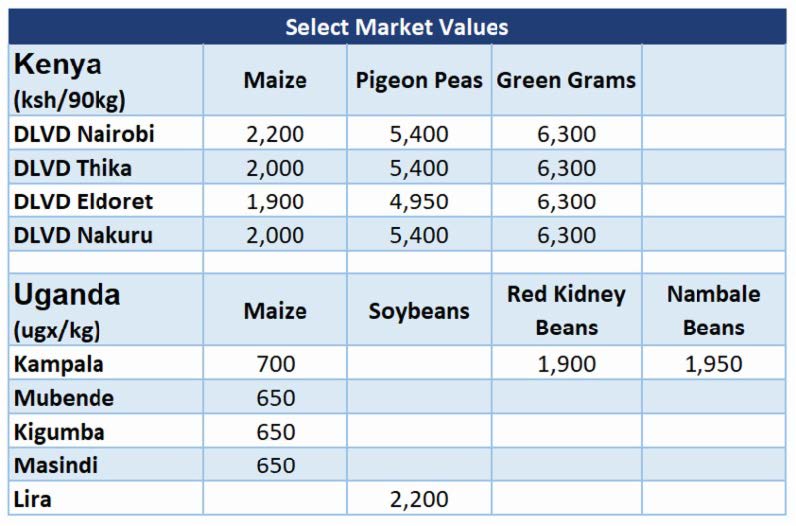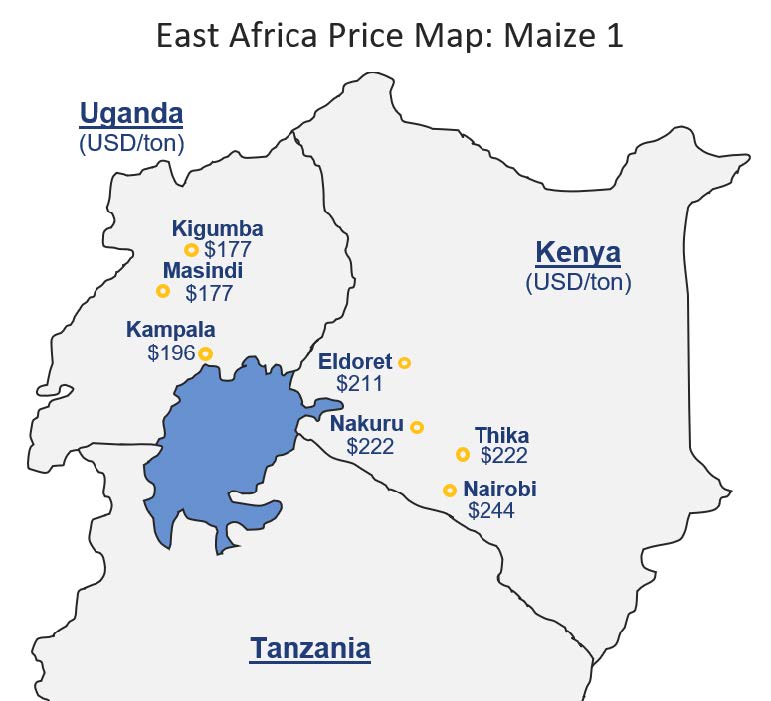Africa News
Market Update 02-06-19
Kenya:
The price of maize remained steady over the past two weeks, trading at Sh 2,200/90kg and Sh 2,000/90kg in Nairobi and Nakuru. In Thika and Eldoret, prices have decreased slightly, and are currently trading at Sh 2,000/90kg and Sh1,900/90kg. While the price of green grams has increased to Sh 6,300/90kg throughout the country, the value of pigeon peas has remained flat, trading at Sh 5,400/90kg in Nairobi, Thika and Nakuru.
The Kenyan government made the long awaited announcement that only Sh 5 billion will be released for the purchase of 2 million bags of maize to add to the strategic reserves for the NCPB. Chairman of the Strategic Food Reserves Fund, Noah Wakesa, said that the government will only be buying maize to ease pressures on the market in the event of famine and to ensure that Kenya will remain fed under such circumstances. In addition to the smaller than expected purchase, farmera will be limited to delivering no more than 400 bags to the NCPB, leaving a majority of the maize to be sold on the open market. While some might fear that it will be more difficult to sell the maize, new sources of demand will enter the market as opportunity arises. The World Food Program (WFP) announced that they will buy 200,000 metric tonnes of domestically produced maize in 2019 to feed refugees, accounting for about 5% of Kenya’s annual maize production.
The Kenyan government formally announced that it will cease subsidized imports of fertilizer due to procurement challenges. At an event in Eldoret, Chairman Wakesa was quoted, “This year it will not be possible for the government to bring in subsidized fertilizer and farmers should now be prepared to buy it from other sources in the open market.” The price for fertilizer is expected to rise as demand picks up prior to the planting season towards the end of last month. Under the subsidy program, DAP fertilizer was available at Sh1,200 per 50kg but could rise as high as Sh3,000 per 50kg depending on supply issues.
While both announcements of the NCPB buying significantly less than previous years and the government ending the subsidized imports of fertilizer may initially shock and potentially scare farmers, these developments should be welcomed by all market participants, farmers included. The recent NCPB corruption scandals prove that these programs were not necessarily in the best interests of the farmers. The government should be working on programs to help with farmer efficiencies and modernization rather than controlling and manipulating markets.
We are currently instituting a program with a number of farmer groups to help develop actual, market based systems for the upcoming harvests to develop the capacity of farmer groups to be able to sell their crops independently. Interested parties, particularly groups marketing and purchasing pulses, please contact PXAfrica staff.
Uganda:
Fresh maize is entering the market, and trading at UGX 700/kg in Kampala, and UGX 650/kg in Mubende, Kigumba, and Bweyale. The crop from last season is still available in the greater Kampala area and is being marketed at UGX 800/kg. As the new crop settles into the market, the price of maize is expected to increase in the coming weeks. Nambale beans and red kidney beans are also available in Kampala and are currently trading at UGX 1,900/kg and UGX 1,950/kg respectively. Most of the beans have entered the market at this point, thus supply is somewhat fixed until the next crop in June. Like maize, the price of these commodities is expected to rise in the coming weeks.
Soybeans are trading at UGX 2,200/kg in Lira as demand remains high throughout East Africa. Kenyan and Rwandan produced soybeans are attractive for countries like Ethiopia, Malawi and Zambia as soybeans originating in Uganda are expensive compared to the rest of the region. East Africa is both a competitor and potential compliment to Asia in terms of global oilseed supply chain. Countries in Asia are investing in domestic production of livestock compared to relying on imported meat. Soybeans are crucial to the supply chain as they are processed into a protein-rich meal used to feed poultry, cattle, sheep and even farmed fish.
International Updates:
While Uganda experienced increased maize prices due to expanding import demand from countries including Kenya, the East Africa cross border trade bulletin estimates that 111,000 tons of maize was traded within the East African region during the fourth quarter of 2018, representing a decrease of eight percent compared to the fourth quarter in 2017. Although the trade statistic seems worrisome, the decrease in trade compared to 2017 are likely due to maize being more readily available throughout the region. In total, Uganda, Tanzania and Kenya accounted for 57 percent, 32 percent, and 9 percent of the regions exports respectively, while Kenya, South Sudan and Rwanda were the most popular destinations.





